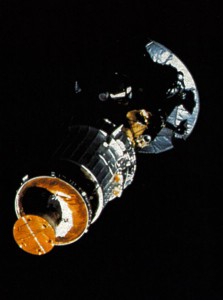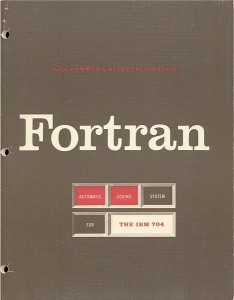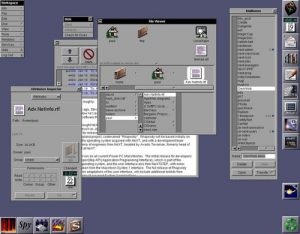Archive for September 2024
Galileo Completes Jupiter Mission
 September 21, 2003
September 21, 2003
After fourteen years in space, eight of those as the first man-made object orbiting Jupiter, the unmanned NASA spacecraft Galileo is sent into the atmosphere of the giant planet. NASA decided to end Galileo’s mission in this manner in order to avoid any possibility of it colliding with one of Jupiter’s moons and potentially contaminating it with bacteria from Earth. How sanitary of them.
First FORTRAN Program Runs
 September 20, 1954
September 20, 1954
The first FORTRAN program is executed. FORTRAN was developed by IBM scientists who were looking for a better way to program the IBM 704 mainframe computer. It quickly became the dominant programming language for scientific and engineering applications and still is used today, especially in the area of high-performance computing.
Turn That Frown … Sideways
![]() September 19, 1982
September 19, 1982
In a posting made to a Carnegie Mellon bulletin board, Professor Scott Fahlman proposes the first known use of emoticons (also known as smilicons or smileys). While the use of emoticons became widespread during the 80’s and 90’s, their origin remained unknown until September 10, 2002, when the original message was retrieved from backup tape.
The following is the original message:
19-Sep-82 11:44 Scott E Fahlman :-) From: Scott E Fahlman <Fahlman at Cmu-20c> I propose that the following character sequence for joke markers: :-) Read it sideways. Actually, it is probably more economical to mark things that are NOT jokes, given current trends. For this, use :-(
Side note, personally I may have been the first to use a smilicon in printed form when I put one in my high school yearbook with my senior quote under my picture. Edwardsville High School Class of 1992!
NeXTSTEP OS Released
 September 18, 1989
September 18, 1989
NeXT Computer releases version 1.0 of NeXTSTEP, an object-oriented, multitasking operating system. Originally designed to run on NeXT’s brand of computers, it was later ported to other architectures such as the Intel x86.
Often considered years ahead of its time, NeXTSTEP brought to market many advanced features that were not seen together in any other operating system for nearly 10 years. Its powerful object-oriented development environment was also used for the creation of the word wide web.
In 1997 Apple acquired NeXT Computer to build their next-generation operating system upon the NeXTSTEP architecture, later named Mac OS X. Today’s iOS that runs on iPhone and iPads is descended from Mac OS X and NeXTSTEP.
I had the opportunity to use NeXTSTEP in 1992 for a computer science class at the University of Illinois. I immediately recognized how powerful it was, yet didn’t fully appreciate what I was experiencing until years later. It really wasn’t until the late 1990’s and early 2000’s that other operating systems brought together the power and reliability of NeXTSTEP.
